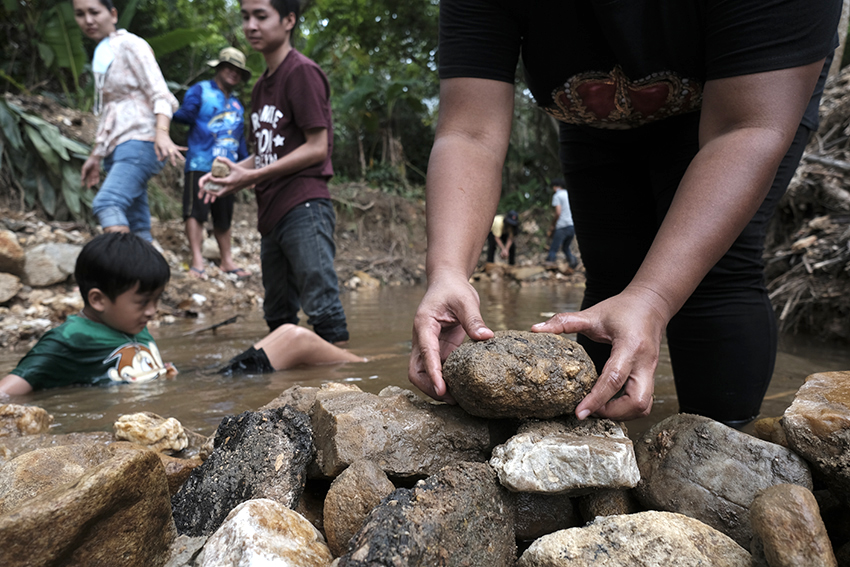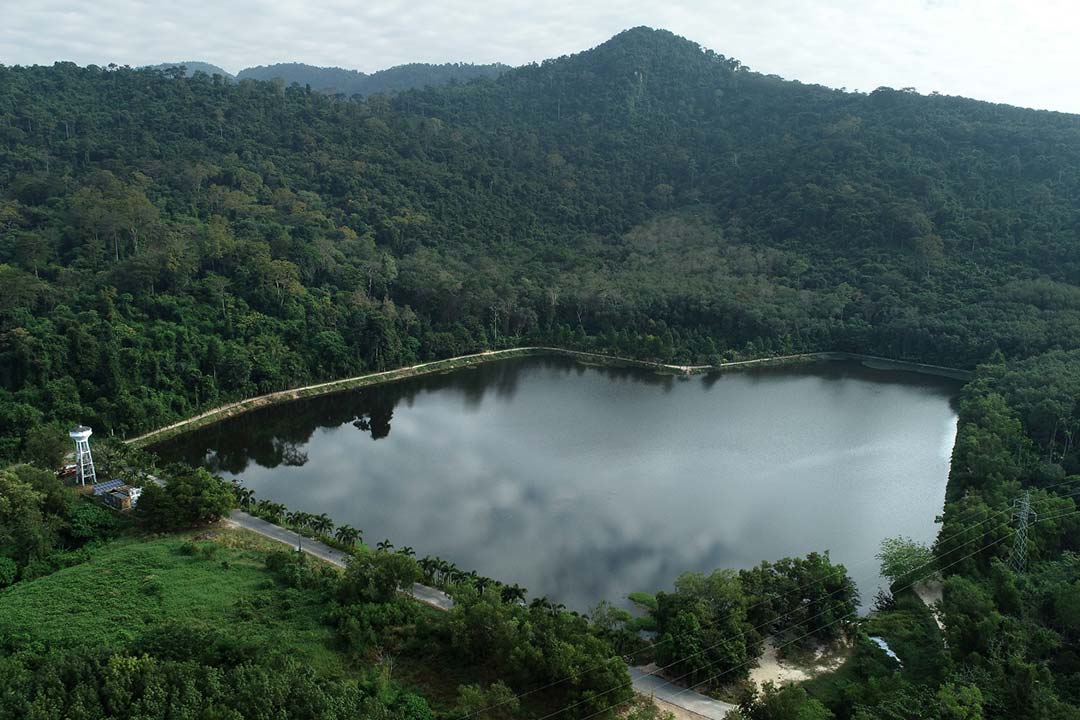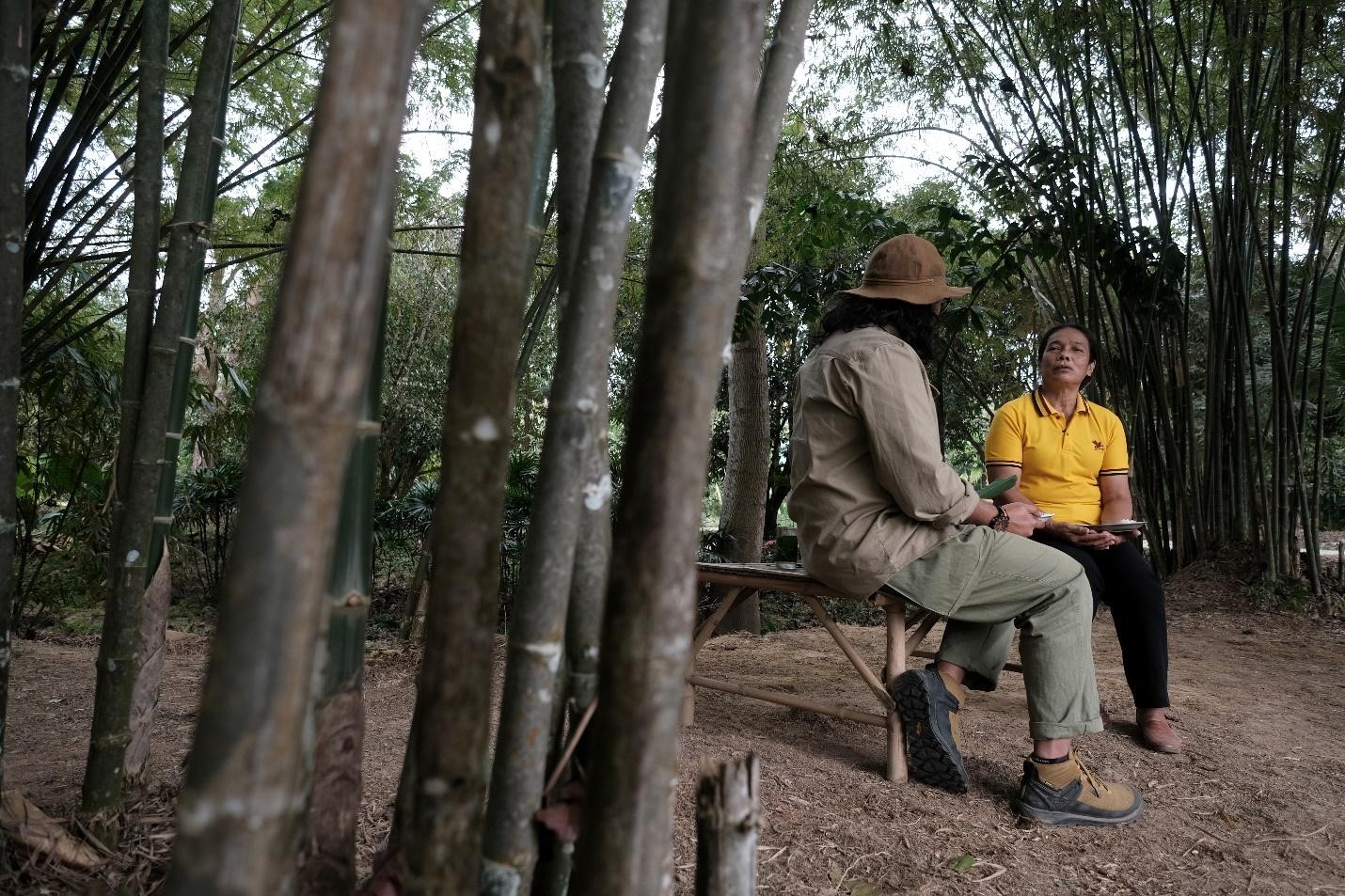Rewinding back 20 years, the communities surrounding Khao Yai Da in Rayong province faced a persistent drought crisis. The once lush forests lost their fertility, and biodiversity was in crisis, causing hardship for the local people. However, today, they have transformed this arid land into a thriving tourist destination, boasting abundant "water resources." The community has become a model for sustainable water management, driven by the collective efforts and cooperation of everyone involved.
So, how did they do it? In this article, SCG Chemicals, a leading chemical company in Thailand, will take you on a deep dive into the interesting story of sustainable water resource management in the communities around Khao Yai Da in Rayong Province. And on this occasion, SCGC also emphasizes the importance of "World Water Day", which falls on March 22nd every year.
----------------------------------------------------------------------------------------------------------------------------------------
MORE STORIES FROM SCGC:
✓ Update! 2022 Sustainability Report
✓ Reshaping Business and Investing for Global Positive Impact
✓ Parallel Worlds of 'Paper' and 'Plastic'
----------------------------------------------------------------------------------------------------------------------------------------
Enduring 20 Years of Challenging Drought and Water Scarcity Cycles
Mapjun community, one of the communities surrounding Khao Yai Da, is located in both the Mueang and Ban Khai districts of Rayong province, covering an area of over 28,937 rai and is home to about 10 villages. Currently, the Mapjun community is recognized as a fertile and lush area, with trees stretching as far as the eye can see. This harmonizes with the abundant water sources found throughout the area, giving the impression that the area's natural richness has never been depleted.
However, looking back to the year 1988, the Mapjun community, whose residents primarily made a living from fruit and rubber tree farming, had faced ongoing environmental and socio-economic issues for over 20 years. Encroachments into the forested areas for the cultivation of single-crop cash crops led to the soil in these areas being unable to absorb water. Coupled with the geography of the coastal region and sandy soil characterized by low water retention, rainwater during the rainy season quickly turned into surface water that rapidly flowed into rivers and eventually the ocean. When the drought season arrived, there was no water stored for agricultural purposes, leading to a shortage of drinking and domestic water supply for the local villagers.
"The water scarcity problem affected the agricultural way of life of the communities around Khao Yai Da, which is a major fruit-growing area in the country, producing durian, mangosteen, rambutan, pineapple, and long kong. Without water to support the yield, the villagers lost their main source of income, which they relied on to sustain their lives, leaving their livelihood in a precarious state."
The memory of the difficult past were recounted by Wandee Intaraprom, the village headman of Mapjun, Rayong Province, in Moo 7: "Over a decade ago, this place wasn't as abundant as it is now. It was a deforested hill because of forest encroachments and a massive wildfire. The wild animals fled, and the area faced a recurring drought crisis for several years. When it rained, there were no trees to absorb the water, causing soil erosion and an inability to retain water for planting. We had to buy water from elsewhere for use. We once came together to plant trees, but we were unsuccessful because we lacked knowledge about planting forests properly."
After learning about the successful construction of water retention dams by SCG in Lamphun province, Headman Wandee decided to contact SCGC for advice on revitalizing the Mapjun community around 2007.
"Good Water Storage, Sufficient Water Use": Collaboration for Success
Upon hearing the villagers' problems in Mapjun community, SCGC agreed to act as a consultant and mentor for the revitalization of the communities around Khao Yai Da. They started working together with the villagers since 2007, with the involvement of the Office of Science, Research, and Innovation Promotion Committee (SRI). They applied local research and traditional wisdom, combined with more than 10 years of accumulated experience, to create a sustainable community-based water management model. This led to the concept of "Good Water Storage, Sufficient Water Use" with a 2 Cultivate, 2 Collect model to address drought issues and establish a sustainable water management system within the community. The four key aspects of this approach are as follows:
- Cultivate Human Potential: SCGC initiated the process of cultivating human potential by gathering volunteers from the Mapjun community, led by village head Wandee and Dr. Pongsak Witwaschutikul, a former expert in watershed conservation and management from the Department of National Parks, Wildlife and Plant Conservation, who acted as project advisors and helped create local researchers within the community who prepared and managed water sources. SCGC acted as a consultant and guided these volunteers to become knowledge disseminators for proper water management within the community, fostering a spirit of forest and water conservation.
- Cultivate rules: To ensure long-term shared water usage, villagers in the communities around Khao Yai Da established drought-season water usage rules to manage water resources adequately. These rules were created based on the collection of water source data throughout the year.
- Collect data: Dr. Pongsak Witwaschutikul, the project consultant, introduced the concept of "local researchers" capable of systematically collecting and recording water-related data and developing water management plans. This involved gathering data on humidity, rainfall volume using household equipment, and well water data using depth gauges and ping pong balls to measure currents at water stations. Basic calculations were used to determine the water volume in the community and establish water usage rules.
- Collect water resources: SCGC and the Mapjun community members agreed that it was necessary to maximize rainwater collection in the areas around Khao Yai Da by increasing rainwater absorption, reducing surface water, and slowing down water flow. This was achieved by restoring upstream forests through a five-tiered reforestation plan and building check dams to slow down rainwater, allowing the soil to absorb water and store it from the hills. Additionally, they built check dams for agricultural areas that are located near the lower part of the canal.
Sustainable Water Storage Strategy
"We must find ways to collect as much rainwater as possible by increasing rainwater absorption, reducing surface water, and slowing down water flow to maximize water storage areas." The above statement reflects the principles of water storage that the communities around Khao Yai Da and SCGC have jointly decoded. Additionally, Dr. Pongsak Witwaschutikul elaborated on the methods of water storage in the Khao Yai Da community: "We recommend reducing the problem of water scarcity and storing water for the dry season by restoring upstream forests with five-tiered reforestation to slow down rainwater flow, allowing the soil to absorb water, building check dams to store water from the hills, retaining moisture, building embankments, and digging canals to increase water storage in the canals. We also suggest creating underground water banks to store rainwater back into the ground."

The five-tiered afforestation involves selecting local forest plants with five different canopy levels: the underground level (e.g., taro, cassava), ground level (e.g., pumpkin, watermelon), low level (e.g., chili, eggplant), middle level (e.g., mango, coconut), and high level (e.g., teak, rubber). These plants are cultivated to supplement the existing forest. The diverse canopy levels help reduce the impact of raindrops on the soil surface, extend the time it takes for raindrops to fall, and maximize the soil's rainwater absorption capacity.
"Check dams help reduce water flow velocity, increase water accumulation in the soil, reduce sediment turbidity in the water, and increase forest vegetation by up to 14.08%."
As for the underground water banks, they involve digging holes to store rainwater that falls on the ground during the rainy season underground. This replenishes the underground water system in residential areas or community gardens. This method helps maintain soil moisture, conserve water for nearby plant irrigation, and reduce flooding during the rainy season. Additionally, it retains excess water, providing moisture during the dry season.
"10 Years of Collaboration: Reviving Sustainability Crisis"
Over the past 10 years, SCGC and the Mapjun community have collaborated continuously on water management projects for the community, revitalizing the community's life, especially with regard to “water resources”, which are the source of various forms of abundance. The water in the streams provides a production of 14.83 million cubic meters per year, supporting agriculture around Khao Yai Da with a total production of 79,382,695 kilograms per year. The ecosystem has returned to the forest, serving as a habitat for living creatures with 123 species of wildlife and more than 120 species of plants. Additionally, it has helped reduce global warming, with the average annual temperature dropping by 1.6 degrees Celsius, capturing 38.49 tons of CO2 per acre and absorbing 5.41 tons of CO2 per acre per year (data as of July 6, 2022).

Apart from the natural abundance that has returned to the Mapjun community, the collaboration between SCGC and the community has extended to community-based tourism projects with a tourism value of 538.54 Baht per rai. They welcome tourists to experience the richness of nature, shop for community products, and participate in various conservation-oriented tourism activities to pass on the concept of sustainable local water management to visitors.
The various efforts have not only brought back the abundance of nature to the community of Mapjun, but also helped increase their income. "After SCGC came in to implement various projects, we have not suffered from water shortages. We have water for agriculture throughout the year, creating a great production and economy for us. It has allowed us and the community to live well," said Jaroon Suthatsan, a durian orchard owner in the community around Khao Yai Da.
Wandee, a community leader, also spoke about the success of the "Good Water Community: Good Water Storage, Sufficient Water Use with 2 Cultivate 2 Collect" project in the area: "Since we started building weirs from 2008 to 2010, we began to see changes on Khao Yai Da, which led to the forest's return to its abundant state today. We can now grow various vegetables and crops throughout the year. SCG Chemicals has also helped guide us in transforming our produce into a wide range of products and expanding our Mapjun community into an ecotourism destination, generating additional income for the community. We would like to thank SCGC and the team of experts who have been both friends and mentors, closely supporting and taking care of us."
For tourists interested, you can contact and book a community tour at Mapjun through the Facebook page "Mapjun Local Tourism" (https://www.facebook.com/mapjunlocaltourism/) or contact the village head, Ms. Wandee Intaraprom at 089-284-1204. Explore more about the initative at the video below.
The "Good Water Community: Good Water Storage, Sufficient Water Use with 2 Cultivate 2 Collect" serves as an important example of establishing good relationships with communities surrounding the company's plants and fostering community resilience for sustainable growth together. In addition, it highlights SCGC's commitment to the United Nations' Sustainable Development Goals (SDGs), including: SDG 1: End poverty in all its forms everywhere, SDG 6: Clean water and sanitation, SDG 11: Make cities and human settlements inclusive, safe, resilient, and sustainable, and SDG 13: Take urgent action to combat climate change and its impacts.








